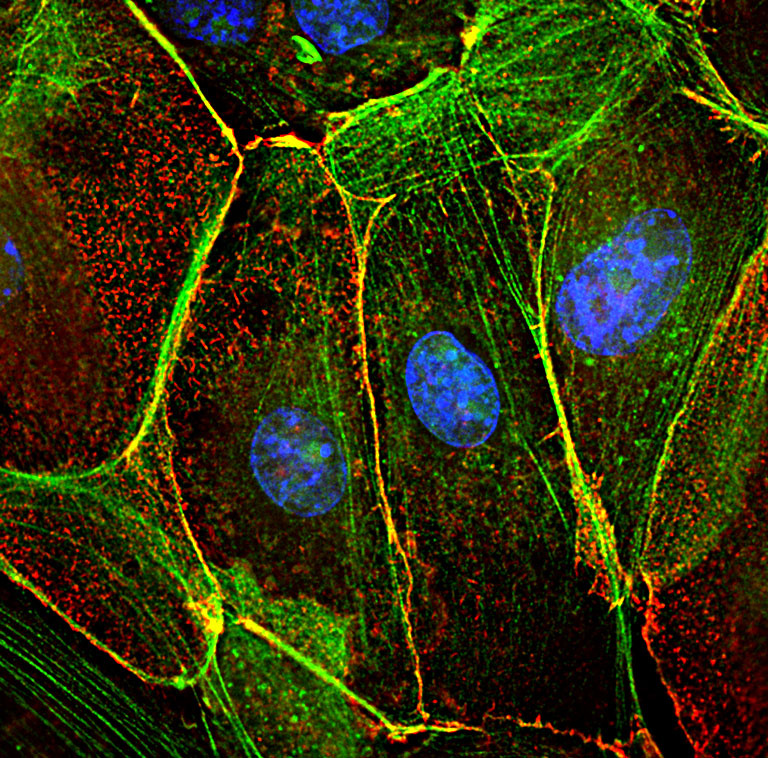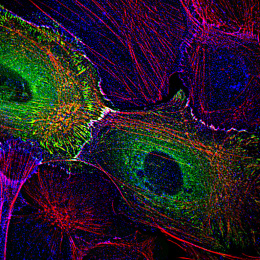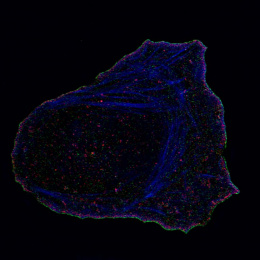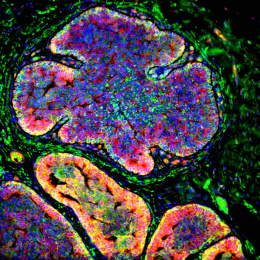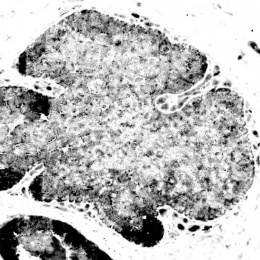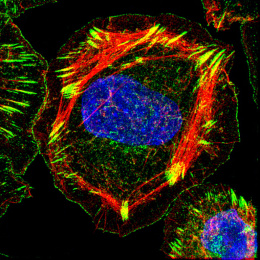Cytoskeletal Remodeling in Skin Cells
Cytoskeletal Remodeling in Skin Cells
Submitted by Michele Balsamo of the Gertler Lab at the Koch Institute
MIT Department of Biology, Koch Institute at MIT
Michele Balsamo
Gertler Lab, Koch Institute
Deconvolution Micrograph
"This picture shows the requirements of an active actin cytoskeleton remodeling during cell-cell junction formation, a basic biological process that will give rise to a functional epithelium, for example the skin. These cells are indeed keratinocytes (skin cells) that are stimulated to form cell-cell junctions in vitro. In green is the filamentous actin cytoskeleton (F-actin) while in red are labeled the sites of active actin remodeling in the cells, visualized by the use of red-labeled globular-Actin (G-actin), incorporated in the cells while they are still live. Blue is the DNA in the nuclei.
Often in human epithelial cancers such as breast, prostate, lung, colon, pancreatic, skin (non melanoma skin tumors) there is a massive disruption of the normal tissue architecture, and deregulated cell-cell adhesion can contribute to metastasis. This has been shown in models of the epithelial to mesenchymal transition (EMT), which is a biological process that naturally occurs during embryo development for the formation and shape of different organs, but in epithelial cancers is thought to contribute to metastasis. I was trying to learn the contribution of actin cytoskeleton regulatory proteins during the formation of cell-cell junctions in epithelial cells."
